|
Sir Abe Bailey Bequest
Conservation |
|
Home
|
CatalogueThe Culture of the Countryside: SIR ABE BAILEY AND HIS COLLECTIONNote: move your mouse over the image for the caption This exhibition marks the most comprehensive review of the Bailey collection for many years. There are some 400 works in the collection, so it cannot be exhibited in toto, but the current show is an attempt to do justice to as much of the Bailey bequest as space permits. It is also motivated by a need to represent its breadth of scope. In 1970, the last time a major Bailey exhibition was held, the focus was purely upon the sporting works in the bequest and largely upon the paintings of this type.1 This time, the aim has been to represent fully all the media bequeathed by Bailey - paintings, prints and drawings - and to give as accurate as possible a sense of the various pictorial themes that interested him.
Bailey's admiration for Rhodes and sympathy for his ideals saw him become part of the group that formed the notorious Reform Committee. He was initially sentenced to imprisonment, then heavily fined instead for his complicit involvement in the Jameson Raid, but went on to pursue an active political life in government. He became Member of Parliament for Barkly West, Rhodes' old seat, in 1902 and in 1908, represented Krugersdorp in the first elections of the Transvaal Parliament. In the First World War, he served as Deputy Assistant Quartermaster-General to the South African forces and was involved in recruiting men for the army. He was awarded the Croix de Guerre by the French government and a baronetcy by the British one in recognition of these services. Bailey spent a good deal of his life commuting between South Africa and Britain, where he had a home in London and in East Grinstead, Sussex and Newmarket, Suffolk. This arrangement, combined with his wealth and influence, (the latter aided by his second marriage, in 1911, to Mary Westenra, daughter of the fifth Lord Rossmore of Monoghan) allowed him to play a part in British political life also. The meeting in December 1916 which resulted in Lloyd George replacing Asquith as British Prime Minister took place at Bailey's London home in Bryanston Square. A meeting that helped bring to a close Britain's General Strike of 1926 was held here also. There were frequent social gatherings at Bailey's Sussex and Yorkshire homes, where guests included Smuts and Churchill, a particular friend of Bailey's, and a number of other leading British political figures.2 Bailey seemed to have had a talent for facilitating negotiations between opposing political groups. Back in South Africa, he would invite to the same parties men as politically diverse as Hertzog, Botha, Smuts, Duncan and Jameson, and manage to 'soften personal resentments'3 if not more theoretical points of difference. It was done in an unforced way, helped along by Bailey's genuine amiability and generosity. It helped that Bailey was personally convinced of the need for common ground to be found between the Afrikaner and the British, a conviction which lay behind his sponsorship January 1954 of the Union Club movement and its journal The State. His strong emotional commitment to South Africa was also a strength. Thanking the country for giving him social mobility, a feat much harder to achieve in the England of the day, Bailey told a gathering in 1930: "I did not come out of the top drawer. I am the son of emigrants. My parents went to South Africa and there I was born, and I love South Africa with all my heart,... for it was in that country... that I was able to rise from the bottom of the ladder."4 His son James remembered that he often used to dwell on his humble origins and subsequent rise through the ranks, repeating the refrain that he was "a self-made, self-made man".5 It was a thought which seems to have kept the father grounded and should perhaps be related to his love of the country life, whether in South Africa or in Britain.
"All my life I have been a gambler. I have not in mind the meaningless habit of putting a pound or two on a horse and waiting for a jockey to pull it first past the post. That's just feeble fumbling with fate. I mean going all out on something which may yield big returns in life - love, politics, everything that touches human activities: but always be guided by a sound knowledge of what is possible (even though seemingly in the realm of the miraculous), and what is not possible. The chances against success may be terrifying, but if you have got the gambler's instinct, the more nearly they are terrifying, the more fascinating they become. That is your gambler."6 It was an impulse which made Bailey a fortune in mining (at the time of his death, he was a director of thirty-two mining companies) and, on a slightly smaller scale, netted him the largest sum ever made at Johannesburg's July Handicap when his horse Lovematch won £64 000. But his interests were not confined to horses. He was a keen boxer, in the days when the sport had a different status from its current one7 and was also an enthusiastic supporter of South African cricket and a member of the Transvaal eleven. Meanwhile in Britain, where he spent a good deal of his time (it was estimated that by 1936 he had travelled between Southern and Northern hemispheres a hundred times), he was a keen participant in fox hunting and pheasant shooting as well horseracing. Indeed, in recognition of these interests, Bailey used to arrive in Britain in time for the famous Derby, and leave at the end of the pheasant shooting season. It was, then, a life of great good fortune, in which city business activity was interspersed with the largely rural sporting activity of the traditional landed gentleman. But Bailey's life was not without its persona] setbacks. His first wife, Caroline Paddon, whom he married in 1894, died in 1902, leaving a son and a daughter. In 1924 Bailey himself began .to suffer ill health and was diagnosed in 1929 with thrombosis. By the mid 30s, this condition had seriously advanced, causing Bailey extreme pain. In 1937, his left leg had to be amputated, and in the following year, the other leg was also removed. Bailey showed a salutary wit and lack of self-pity about his new condition. Turning down an invitation to the opening of Rhodes' birthplace as a national museum in 1938, he was able to quip "I am sorry I cannot rise to the occasion and be with you, as my legs have not yet grown again".8 He died at his Muizenberg home two years later, and was buried on the Muizenberg hillside. In his lifetime, Bailey made two notable public benefactions. He presented the Fairbridge Collection (some 15 000 volumes) of Africana to the South African Library and provided a special wing in which to house it, and he gave £100 000 to the Royal Institute of International Affairs in London with which Chatham House was secured as its headquarters. In his will he provided for the creation of the Abe Bailey Trust, the aim of which was to finance initiatives by which British and Afrikaans South Africans might "work together wholeheartedly in devotion to the interests of their [sic] common country."9 He also bequeathed to the South African National Gallery his large art collection.10
In his opening address, Smuts noted that Bailey "made no great pretence to be a man of great discrimination in art", but that he collected what he loved, pictures which reminded this "son of the soil" of the countryside and of its pleasures. With his gaze fixed on his audience rather than on the Bailey pictures, Smuts went on to note "the eerie loveliness of South Africa and the opportunities which its manifold and wonderful charm offers the artist of the future".13 Smuts' comment was very much at a tangent to the actual Bailey collection because these works had very little to do with South Africa. They were bought in Britain, of largely British artists, and had been housed in a British home. Why, then, should they have been given to a South African gallery? One answer is that the South African National Gallery had only moved into custom built premises a few years previously, in late 1930, and was still struggling to build up a sizeable and internationally competitive collection. It was desperately in need of gifts and bequests of important works. Secondly, Bailey would have been aware in 1935, the year he first proposed this bequest, that Sir Edmund Davis (1862-1939) had recently pledged a part of his collection to the gallery. Davis, a fellow mining magnate who had benefited from the South African minerals boom, presented works in 1935 and 1936 and again in 1938.'14 Meanwhile, since 1926, Alfred A. de Pass (1863-1952), another part South African, part British benefactor made wealthy in southern Africa had been presenting works to the gallery and gaining notice in the press as a result.15 It would have been clear that this kind of civic-minded gesture befitted a man of means who had family or business connections with the country. Thirdly, as we have seen, Bailey felt a particularly strong affection for South Africa and a gratitude for what it had allowed him to achieve. Bequeathing to this country a collection of pictures that he had "enormously enjoyed"16 must have seemed highly appropriate. The question remains why Bailey should have thought his highly anglophile collection suitable for a South African audience. The answer is, of course, that even in the 1930s and 40s, a time of increasing Afrikaner nationalism, the Cape was still oriented culturally towards the 'Mother Country' and struggling to conceive of itself as part of a larger 'South Africa'. It would have seemed far less surprising than it does today to come upon a wealth of pictures of British faces and places in a gallery at the southernmost tip of Africa. But if the oddness of this seems particularly acute now, it is arguably also the case that it offers a useful distance on the works. Looking at these pictures in a post-colonial South Africa, we can finally admire their documentary and aesthetic value without feeling the need to take sides on the issue of colonial politics. Most of the paintings in the Bailey collection fall into two distinct categories, of portraiture and 'sporting art', with sporting pictures being in the majority. The scope of 'portraiture' is self-evident; 'sporting art' is less well known. It is a fairly recently-coined term for a range of pictures based around the horse and the countryside. At its most precise, it designates pictures that celebrate the rural sports of hunting and game shooting, horse racing, and 'coaching' or horse-drawn transport. The term can be applied also to pictures of sports such as cricket, but the focus in Bailey's collection is upon the former group. It is a type of art that flourished in Britain in the eighteenth and early nineteenth centuries. Bailey's large collection of sporting paintings - particularly rich in works by Henry Alken (1785-1850) and Samuel Alken Junior (1810- 1894), Charles Henderson 1803-1877), John Herring Senior (1795-1865), James Pollard (1792-1867), John Sartorius (1759-1828) and Dean Wolstenholme Senior (1757-1837) - was one of the more extensive private collections of this type of art in the early twentieth century. Its bequest to the South African National Gallery makes this gallery one of the very few in the world with such major holdings in this area. The prints in the Bailey collection are more various in theme than the paintings. They include many sporting subjects, but also images of great naval conquests and heroes, plus sentimental 'boudoir' pictures and pictures of an arcadian rural past. They range, technically, from engraving to etching, aquatint, mezzotint and stipple. The drawings include some sporting images, but feature landscape studies also. The vast majority of paintings, prints and drawings are by British artists active within the period 1760 to 1850. This is very much a collection of nostalgic images, of public figures and pastimes from an age that would have been distant even to Bailey when he was collecting them. The portraits in the collection are largely of the late eighteenth and early nineteenth centuries. They include works by Romney 1734-1802), Reynolds (1723-92), Gainsborough (1727-88), Beechey (1753-1839), Hoppner (1758-1810) and Lawrence (1769-1830). Among them are Hoppner's Portrait of William Pitt, Lawrence's Portrait of the Poet Robert Southey, a magisterial portrait of Lieutenant General Hay Macdowall by Raeburn and an imaginary pastoral portrait, Lavinia or The Milk Maid by Gainsborough. These were works produced during a period of unprecedented interest in portraiture in Britain, a golden age of portraiture that was never again matched.
This was all very different from portraiture, which pictured contemporary people and which captured a likeness at the expense of making the viewer very aware of the quotidian specifics of dress and fleshly body. The whole emphasis upon History painting arose out of the belief that it was only by distancing itself from visual specifics and from the familiar that a painting could offer the kind of intellectual challenge posed by writing or speech. Language was the miraculous phenomenon that separated us from animals; visual experience was shared by animal and Man alike. So, the argument ran, to elevate picture-making above mere copying (and above mere stimulation of acts of recognition on the part of the viewer), the artist had to inject into it a textual dimension. Unlike France, however, Britain never established a thriving History painting tradition because it lacked the necessary Court and Church patronage and lacked the sense, too, that it was the inheritor of Italian artistic culture. Buyers wanted pictures of the here and now instead, pictur.es that would document their appearances and their possessions. At a time when Britain was enjoying increasing prosperity and influence on the world stage, the eyes of its art audience were focused firmly on the present. So despite the much greater theoretical status of History painting, most British patrons opted for the portrait.17 And from 1761, with the establishment of the Society of Artists, these portraits could be exhibited to the public at annual exhibitions, joined by those of the Royal Academy when this institution was established in turn in 1769. Very large numbers of people visited these exhibitions and the more esteemed portraitists such as Joshua Reynolds benefited enormously from them. Reynolds was an interesting case of an artist who devoted most of his career to portraiture while remaining convinced of its inferiority to History painting. As director of the Royal Academy, he lectured art students on theoretical issues in the visual arts, and these lectures were gathered together as the still-famous Discourses on Art. In Discourse number three, this highly influential art theorist delivered a classic argument for the abstractness and resulting intellectual depth of History painting: "If deceiving the eye were the only business of the art, there is no doubt, indeed, but the minute painter would be more apt to succeed: but it is not the eye, it is the mind, which the painter of genius desires to address...This is the ambition which I wish to excite in your minds: and the object I have had in my view, throughout this discourse, is that one great idea, which gives to painting its true dignity, which entitles it to the name of a Liberal Art, and ranks it as a sister of poetry"."18 Reynolds goes on to concede that there are many types of painting "which do not presume to make such high pretensions", and lists as examples the pictures of daily life beloved of Dutch seventeenth-century artists, battle-pieces, French Gallantries, landscapes and seascapes. "In the same rank", he adds, "is the cold painter of portraits".19 And yet the demand was for portraiture, and Reynolds was to make himself a master of the genre. The solution to this conflict of interests was to approximate portraiture as closely as possible to History painting. It might be done by endowing a sitter with allegorical meaning, or by alluding, through pose, to celebrated Classical statuary, or by clothing the sitter in loose drapery reminiscent of Classical robes, or by including in the background vaguely Classical props. The latter was a favourite device and, like the others, was not peculiar to Reynolds. A number of the portraits in the Bailey collection employ the fluted Classical column (often an urn was used instead in the case of female sitters) and the swathes of background drapery that conferred on a portrait an instant sense of'the Classical'. These columns and lengths of drapery are always gratuitous, but they imply some continuity between distant past and present and hopefully confer on the sitter some of the refinement and intellectualism of Classical culture. The eighteenth-century British conviction that Britain was the inheritor of Ancient greatness made these pictorial allusions particularly significant.
Given the belief in the inferiority of portraiture to History painting, one can imagine the eighteenth-century reaction to what is now called 'sporting painting' and which at the time was generally referred to as 'animal painting'. The influential Jonathan Richardson, in his Essay on the Art of Criticism of 1719, summed up the general view when he declared that pictures of animals are "pictures which can do no more than please", adding that "they cannot improve the mind [and] they excite no noble sentiments".20 The sporting artist laboured against this prejudice in the art world, and had to content himself with an enthusiastic audience within the rural sporting world. He was always on the periphery of the professional art world, and regarded as something of an amateur practitioner. This was partly to do with the fact that many sporting artists were in fact very modestly trained, and partly to do with the 'lowness' of their animal subject matter. It also had to do with the prejudice against rural sports and their apologists, of which more later. Whatever the reasons, the art world's attitude towards sporting pictures was perhaps not too problematic for the many sporting artists of only modest ability, but for a highly-trained and highly accomplished artist like Stubbs, it certainly was. Josiah Wedgwood, with whom Stubbs worked at one stage of his career, noted that "I find Mr. S (Stubbs) repents very much of his having established this character for himself. I mean that of horse painter, and wishes to be considered as a history and portrait painter. How far he will proceed in bringing about the change at his time of life I do not know."21 Stubbs' decision to have his portrait painted standing in front of one of his few History paintings - a work on copper done for Wedgwood, Phaeton and the Chariot of the Sun - testifies to this urgent wish to be regarded as a 'High' artist.22 For many of the sporting artists represented in this collection, however, the possession of an eager buying audience among the sporting fraternity was justification enough for producing this kind of painting. During its heyday, from the late eighteenth century to about 1850, many of these artists made a reasonably comfortable career for themselves by producing these sorts of pictures exclusively. They were bought by the men who took part in these sports and they offered fond records of triumphs and mishaps on the racecourse and in the hunt. Racing pictures often bridged the gap between sporting art and portraiture by offering a likeness of one particular horse alone. A proud owner would commission its portrait as he would a portrait of himself or his family. It might be posed in the stable, or, as favoured by George Stubbs (1724-1806), against a clear and spacious landscape backdrop. The three outstanding 'horse portraits' by this artist in the Bailey collection - Firetail with his Trainer, Rosaletta and Two Bay Hunters by a Tree in an Open Landscape are all good examples of the genre.
The new leaner and swifter horses transformed the sport of hunting also. Where initially it had been somewhat slow and sedentary, with fast horses it became very much a 'chase' across large tracts of countryside. Careful breeding of hounds in the eighteenth century improved the speed of these animals too, and the hunt became as much an excuse for cross-country gallops as for tracking down an animal. The process was helped enormously by the 'enclosure' of farming land, which accelerated during this period. Large areas of previously unused or subsistence farmland were gathered together into much larger farms than had previously existed, and were subdivided into separate fields by low fences or hedgerows. Agricultural production on a far more profitable scale resulted from the land enclosure. But a curious and perhaps unanticipated side result of this trend was the change in the sport of hunting. The newly cleared land, well maintained and dotted with exciting 'jumps' (the hedges and fences), now became an inviting and accessible terrain to cross at speed. By the eighteenth century, most of the sport hunting in Britain was fox hunting. This had largely replaced the more patrician stag hunting associated with royal parties of an earlier age. Deforestation plus overhunting had caused the deer population to decline by the mid eighteenth century, and the verminous fox, once regarded a crude target, had become the object of the chase. Hunting broadened its social base also. While never a sport for the masses, in the course of the eighteenth century, it lost all its special associations with royalty and became the pastime of the wealthy landowner but also the more modest 'squire'. These 'gentlefolk' perpetuated the tradition whereby the higher ranks of society honed their warlike skills within the highly ritualised substitute world of animals. "Wild beasts", one writer reassured his readers, "were of purpose created by God that men by chasing and encountering them might be fitted and enabled for warlike exercises."23 Hunting had its parallels in some of the other European countries, but it seems to have flourished far more vigorously in England, and spawned a far bigger sporting-art industry. Furthermore, and this is a related point, in England it achieved a far more successful breakaway from the narrow confines of court culture. Eighteenth-century monarchs George I and George II (1714-1760) had little interest in either hunting or horse racing, but this gap was more than filled by the scores of men who felt an attachment to the countryside and a sense of ownership of its riches. These gentlemen of the countryside felt convinced that they did not merely hunt for pleasure. They believed that the sport strengthened the character in various important ways. It prevented idleness, with all its attendant dangers, it promoted physical health, and it fostered manliness - the robust, vigorous, patriotic attitude that made a nation strong. Even by the mid nineteenth century, an apologist for hunting was claiming that the national character was "benefited [by] our upper and middle classes, shunning the frivolous pursuits of the effeminate nobility of the continent, and following manly exercise in the fresh air of their native plains, hills and woods, invigorating both their minds and their bodies; while their offspring, partaking these effects, grow up bold and vigorous, for the defence of their country..."24 The prejudice against Continental (in practice, French) 'effeminacy' was bound up with a prejudice against the easy, luxurious life of urban courts, but what underlies these prohunting statements is generally a broad suspicion of everything to do with the culture'of town and city. The countryside is seen as the place where real men are bred, the town as a place of idleness and impractical thought. It is the home of intellectuals who argue for change and consequent breakdown of old traditions. Much of this town versus country rhetoric had its origins in political difference, the countryside being largely Tory (to the Right of the political spectrum) and the towns being feared as Whig (Liberal) strongholds. A Whig journal like The Spectator gave voice to this division with its creation of the mythical country character, Roger de Coverley, who nursed a "remarkable enmity towards foxes".25 To The Spectator and its readers, the fox-hunting fraternity was conservative and narrow-minded, and its favoured sport merely foolish. The members of this rural world, meanwhile, saw themselves as cherishing the countryside and promoting the best in human nature. Most of the criticism of rural sports was focused upon their social exclusiveness. Concern for 'animal rights' was a much later issue. It was undoubtedly the case that hunting, shooting and racing were bound up with wealth and social status. Hunting required either ownership of the vast areas of land over which the chase took place, or the wealth to rent this land for the duration. For visiting townsmen, the wherewithal to subscribe to a pack of fox-hounds (part-subsidise their cost) was vital. And finally, one's membership of a hunting group was by invitation, and so depended upon prior membership of an appropriate social network. In South Africa, where hunting was introduced in the late eighteenth century, exactly the same social exclusivity characterised the sport. It was the preserve of the aristocratic military officers stationed in the Cape, as well as those serving in the East India Company (the 'Indians') who were temporarily in the Cape en route to or from India. The local British gentry were also part of this hunting culture, which hunted steenbuck on the Cape Flats to the point of near extinction, 26 and which then made jackals and sometimes antelope their target. Governor Lord Charles Somerset, in the Cape from 1814 to 1826, encouraged the development of the sport and, from 1820, began to import English fox-hounds into the country, a preferable option to the local breeding of them which was made difficult by the prevalence of distemper. With the arrival in the Cape of another keen sporting governor, Sir Harry Smith, in 1848, hunting culture was maintained, and hunts were held at Wynberg and at Durbanville. But always the emphasis was on social exclusiveness.27
Meanwhile, horse racing was on the face of it more socially inclusive, with its mixed audiences and its humble stable hands and jockeys. But the desire to emphasise distinctions between the gentleman racehorse owner and the masses was ever-present. It appears to have been one of the impulses behind the formation of England's Jockey Club in 1750 and was an important motivating factor in the creation of clubs such as Tattersall's (established c.1760) where "men of honour might congregate free from the stable, and enjoy a view of the most beautiful horses without being perpetually in contact with the jockey or horse dealer".30 In South Africa, the same class issues surrounded the sport. It was introduced in the late eighteenth century, again by British army officers, and was another sport encouraged by Lord Somerset, who became the official patron of the South African Turf Club when it was established in 1818. Horse racing 'belonged' in effect to British military officers, but with the same curious mix of cultures, the early jockeys were generally Black slaves.31 Moreover the meetings, on Green Point Common, had the character of a funfair, with gambling both on horses and a range of other games, itinerant musicians, swingboats and coconut shies, and a frequently rowdy atmosphere.32 Separate seating facilities kept rich and poor apart however, and when the Kenilworth race course opened in 1882, this particular method of social division was reinforced. The introduction of an entrance fee to this race course, where Green Point had been free, helped reinforce the patrician character of Cape horse racing culture. By the late nineteenth century, the golden age of rural sports was over. They survived, but they suffered both from the invention of the railway, and later, from the post-Edwardian shake-up of the social hierarchy. Rail travel increased rapidly from 1850, in Europe and in South Africa. The first railway began to be built in Cape Town in 1859.33 A stretch of line was built out to Eerste River in 1862, and to Wellington the following year. The Cape Town to Wynberg line opened in December 1864.34 It was extended to Muizenberg in 1883, and reached Simon's Town in 1890.35 As everywhere, rail travel struck passengers as astonishingly fast by comparison with horse-drawn 'omnibuses', trains reaching speeds of 18 as opposed to 8 miles an hour. They were also immeasurably smoother and more comfortable than the "dislocating" travel over poorly-surfaced roads that the coach passenger had had to endure.36 To many commentators at mid-century, it seemed that the railway had ushered in a quite new world, one of speed and efficiency and a new triumphant urbanism. Sports such as fox-hunting, which had prided themselves on their desperate speed and daring, must have seemed increasingly quaint.37 And, in an age of increasing industrialisation, the power and confidence of the countryside symbolised by these sports must also have seemed dated. The railways did not kill the horse-based sports - indeed they even helped to encourage the participation in them of city-dwellers who could now travel out to distant places to attend country events. Nevertheless, rail travel seems to have been a major cause in ending the demand for pictures of them. The movement of wealth to the cities and the tastes of the new businessmen-art patrons were arguably also a factor. Whatever the reasons, by the later nineteenth century, the production of sporting art had almost completely come to an end. It is not surprising, then, that the vast majority of Bailey's sporting pictures date from the period 1790 to 1850.
To characterise the collection, it is useful to compare it briefly to the other collection of largely British art presented to the gallery in these years by Sir Edmund Davis, Bailey's exact contemporary. Davis's collection focuses on a different period, first of all; most of it is of work produced at the end of the nineteenth century and beginning of the twentieth. From this period, Davis collected work that had strong affiliations with Symbolist thought. Paintings by Ricketts and Shannon, Cayley Robinson, Greiffenhagen, Philpot and Constance Rea all exude a spiritual languor and elegance.38 By contrast, Bailey's collection seems energetic and down-to-earth. It returns again and again to the land and to the rugged activities associated with it. But it is simultaneously nostalgic and charming, a kind of pictorial praise to an arcadian rural past. Among the drawing collection, there are some superb landscape watercolours by Peter de Wint. The jewelled watercolours by Myles Birkett Foster celebrate the rural ideal also, but with an attention to minute detail and a feeling for rich colour typical of Victorian picture-making. In a similar vein are the later works by Albert Goodwin - Twilight at Niagra, Altdorf Uri - Lake Lucerne and Pevensey, Sussex. Meanwhile, the sporting prints - which include the celebrated engravings after Stubbs by William Woollett, the Shooting series, and delicate aquatints after Wolstenholme and Henry Alken by R. G. Reeve - all embody a praise of the countryside.
The Bailey collection, as has been noted, is markedly anglophile and contains very little of the Continental tradition, in any of the media. Exceptions are two paintings by Gaspard Dughet, loosely-titled Italian Landscape and Classical Landscape, two small paintings by Meissonier, one of them A Small Street in Antibes, a painting by the seventeenth-century Dutch artist Mattheus Wijtmans, Lady Playing and Dog Dancing, and a nineteenth century genre-cum-History painting, The Death of William the Silent, by Josef Israels.40 But these are exceptions to a collection overwhelmingly oriented towards British art. The late eighteenth-century and early Victorian aesthetic that emerges from the Bailey bequest has had to wait some time to be properly appreciated again. Likewise the sporting pictures that are such a major part of this collection. But in the last few years, there have been quite significant changes in public taste and in professional art historians' concerns, and the highly exclusionist tendency of the latter in particular has been overcome. It is now possible to appreciate the Bailey works for their sociological interest, and for the fascinating light they throw on patterns of collecting. As art history directs its gaze more and more away from the 'great masters' and on to what a picture can tell us about its times and its audience, so we can approach a major bequest of this kind as historians as well as art critics and appreciate it more fully as a result. ANNA TIETZE |
|
Copyright © 2003-2019. Iziko Museums of Cape Town. All rights reserved.
|
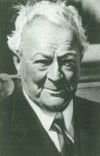 Sir Abe Bailey was born in Cradock in the Cape
on November 6, 1864. His father had emigrated
from Yorkshire in northern England some years
earlier. Soon after Abe Bailey's birth, the family
moved to Queenstown and there the father set
up in business as a carpenter and then as a wool
merchant. The young Bailey, however, was sent
back to Britain for his education. He left school
at only 14, and found work with a firm of woolbuyers
and cloth weavers in London, but before
his seventeenth birthday he was back in South
Africa where he joined his father's business in
Queenstown. In 1886, he moved to Barberton,
enticed by the stories of great fortunes to be
made from gold mining. He had a difficult start,
but in time began to enjoy great success as a stockbroker and
financial agent. By 1894, he had become the head of what
was called the Bailey Group of gold mines and had begun to
establish himself as one of the chief mining magnates of the
Witwatersrand. Here he met Cecil John Rhodes, who became
something of a mentor to Bailey and who was instrumental in
Bailey's involvement in politics.
Sir Abe Bailey was born in Cradock in the Cape
on November 6, 1864. His father had emigrated
from Yorkshire in northern England some years
earlier. Soon after Abe Bailey's birth, the family
moved to Queenstown and there the father set
up in business as a carpenter and then as a wool
merchant. The young Bailey, however, was sent
back to Britain for his education. He left school
at only 14, and found work with a firm of woolbuyers
and cloth weavers in London, but before
his seventeenth birthday he was back in South
Africa where he joined his father's business in
Queenstown. In 1886, he moved to Barberton,
enticed by the stories of great fortunes to be
made from gold mining. He had a difficult start,
but in time began to enjoy great success as a stockbroker and
financial agent. By 1894, he had become the head of what
was called the Bailey Group of gold mines and had begun to
establish himself as one of the chief mining magnates of the
Witwatersrand. Here he met Cecil John Rhodes, who became
something of a mentor to Bailey and who was instrumental in
Bailey's involvement in politics.
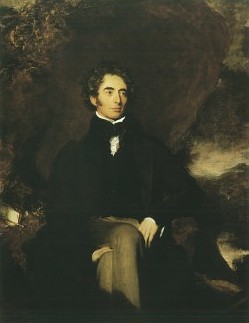 In South Africa, Bailey owned a farm estate in the Hantam
district, near Colesberg, which comprised forty farms covering
an area of 300 square miles. Here he bred sheep and became
one of the major racehorse breeders in South Africa and a
steward of the South African Jockey Club for thirty years. He
closely followed the fortunes of his horses in local races and
unashamedly confessed to his love of gambling, on horses or
indeed on anything, provided it was on a large and daring scale:
In South Africa, Bailey owned a farm estate in the Hantam
district, near Colesberg, which comprised forty farms covering
an area of 300 square miles. Here he bred sheep and became
one of the major racehorse breeders in South Africa and a
steward of the South African Jockey Club for thirty years. He
closely followed the fortunes of his horses in local races and
unashamedly confessed to his love of gambling, on horses or
indeed on anything, provided it was on a large and daring scale:
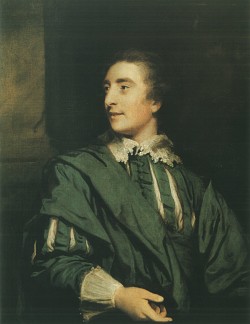 When Bailey died in 1940, the Second World War was underway,
and it was hardly possible to ship his sizeable bequest
out to South Africa. Instead, it was moved, for its safety, from
Bailey's London home to Candover Hall in Shropshire in
North West England. Here it waited out the war along with a
number of other art collections. Once the war was over, it
was shipped out, and the works arrived in November of 1946
(all except Sargent's Viscount Allenby at this stage), many of
their frames 'badly smashed'11 as a result of their wartime
confinement. By late January 1947, the collection was hung
in the three newly created rooms at the gallery, and plans were
laid to invited the Governor General to open the exhibition
officially at the beginning of March. He declined, in the event,
pleading too full a timetable at a time when the British royal
family was visiting South Africa.12 Smuts opened it instead,
on 5 March.
When Bailey died in 1940, the Second World War was underway,
and it was hardly possible to ship his sizeable bequest
out to South Africa. Instead, it was moved, for its safety, from
Bailey's London home to Candover Hall in Shropshire in
North West England. Here it waited out the war along with a
number of other art collections. Once the war was over, it
was shipped out, and the works arrived in November of 1946
(all except Sargent's Viscount Allenby at this stage), many of
their frames 'badly smashed'11 as a result of their wartime
confinement. By late January 1947, the collection was hung
in the three newly created rooms at the gallery, and plans were
laid to invited the Governor General to open the exhibition
officially at the beginning of March. He declined, in the event,
pleading too full a timetable at a time when the British royal
family was visiting South Africa.12 Smuts opened it instead,
on 5 March.
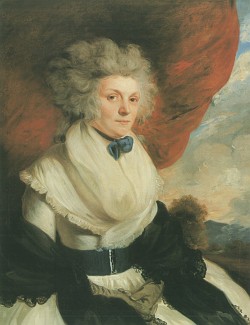 Why portraiture should have had such a heyday in eighteenthcentury
Britain is an interesting question. It was certainly not
the most esteemed of painting categories available to the
artist. Since the founding of the French Academy of Painting
and Sculpture in 1648, a codified 'hierarchy of genres' (a
hierarchy of pictorial themes) had declared that 'History
painting', the painting of the heroic deeds of great figures
from the Classical past, was the most challenging and
respectable kind of High Art. The category was relaxed to
admit into its boundaries the myths of Classical literature as
well as scenes from the Bible. So under the rather specific
title of History painting lay a broad range of thematic options
linked by their reliance upon textual reference, their focus
upon either Bible or Classics, and their concern with the past
and with 'elevated' actions, ideas and characters.
Why portraiture should have had such a heyday in eighteenthcentury
Britain is an interesting question. It was certainly not
the most esteemed of painting categories available to the
artist. Since the founding of the French Academy of Painting
and Sculpture in 1648, a codified 'hierarchy of genres' (a
hierarchy of pictorial themes) had declared that 'History
painting', the painting of the heroic deeds of great figures
from the Classical past, was the most challenging and
respectable kind of High Art. The category was relaxed to
admit into its boundaries the myths of Classical literature as
well as scenes from the Bible. So under the rather specific
title of History painting lay a broad range of thematic options
linked by their reliance upon textual reference, their focus
upon either Bible or Classics, and their concern with the past
and with 'elevated' actions, ideas and characters.
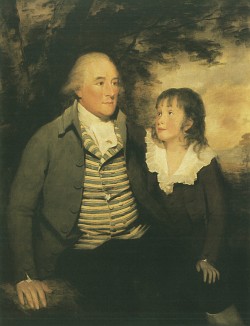 Sometimes, however, the British portraitist would follow Dutch
precedent and produce images of the human figure that were
down to earth rather than refined. The Scottish school,
represented by artists like Raeburn and Ramsay, was particularly
drawn to this option. Raeburn's William Ferguson and his
Son, in the Bailey collection, is a case in point. Here,
Ferguson's boldly striped jacket and broad frame amply fill
the picture space and give the resulting portrait a kind of
robustness which seems entirely opposed to the 'dignified'
portraiture called for by academic doctrine. And in practice
there was an enthusiastic public for this kind of portraiture. In
theoretical debate, however, portraitists continued to bear the
stigma of producing a slightly less than elevated kind of art.
Sometimes, however, the British portraitist would follow Dutch
precedent and produce images of the human figure that were
down to earth rather than refined. The Scottish school,
represented by artists like Raeburn and Ramsay, was particularly
drawn to this option. Raeburn's William Ferguson and his
Son, in the Bailey collection, is a case in point. Here,
Ferguson's boldly striped jacket and broad frame amply fill
the picture space and give the resulting portrait a kind of
robustness which seems entirely opposed to the 'dignified'
portraiture called for by academic doctrine. And in practice
there was an enthusiastic public for this kind of portraiture. In
theoretical debate, however, portraitists continued to bear the
stigma of producing a slightly less than elevated kind of art.
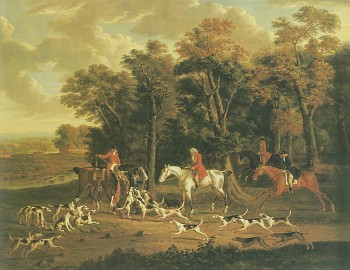 It was unsurprising that racehorse owners were proud of these
creatures. Skilled breeding and training made them prized
possessions, and a far cry from the broader, heavier and slower
horse that worked on the farm and that once had been used in
battle. At the end of the seventeenth century, Arab horses were
imported into Europe to create a newer swifter stock. Initially,
the horse race gained popularity as a means to test the results of
the new breeding programmes. Just two or three horses would
compete in these early races, running a one-mile (1.6 km) race
and being dried at the rubbing down house between races.
From these beginnings, the sport grew to attract large crowds,
large numbers of competing horses and regular racing fixtures.
It was unsurprising that racehorse owners were proud of these
creatures. Skilled breeding and training made them prized
possessions, and a far cry from the broader, heavier and slower
horse that worked on the farm and that once had been used in
battle. At the end of the seventeenth century, Arab horses were
imported into Europe to create a newer swifter stock. Initially,
the horse race gained popularity as a means to test the results of
the new breeding programmes. Just two or three horses would
compete in these early races, running a one-mile (1.6 km) race
and being dried at the rubbing down house between races.
From these beginnings, the sport grew to attract large crowds,
large numbers of competing horses and regular racing fixtures.
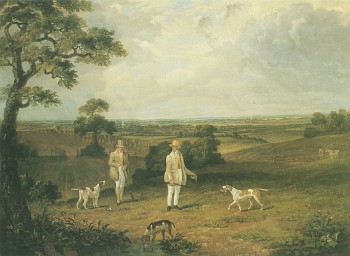 Shooting was arguably more exclusive still. The Game Laws,
enacted in Britain in 1671 and only scrapped in 1831, forbade
any but the landed classes from shooting partridges, pheasants,
hares or moor fowl.28 The argument for these laws was that
they encouraged landowners to remain on their country
estates and thus maintain and care for the countryside.
Another claim was that, if licence to shoot game were too
widely offered, rich stocks of animal and bird life would be
critically depleted. The real reason, however, probably had to
do with a fear of making gun ownership too easy; in times of
social unrest, a mass poor who were unarmed would pose far
less threat than a population armed. Whatever the reasons,
the law was enforced very strictly and transgression of it was
typically punished by heavy fine and a whipping and sometimes
even by deportation.29 This, in times of agricultural
depression and poverty, seemed particularly harsh, and there
were longstanding criticisms of the law from those who had
no vested interests in it.
Shooting was arguably more exclusive still. The Game Laws,
enacted in Britain in 1671 and only scrapped in 1831, forbade
any but the landed classes from shooting partridges, pheasants,
hares or moor fowl.28 The argument for these laws was that
they encouraged landowners to remain on their country
estates and thus maintain and care for the countryside.
Another claim was that, if licence to shoot game were too
widely offered, rich stocks of animal and bird life would be
critically depleted. The real reason, however, probably had to
do with a fear of making gun ownership too easy; in times of
social unrest, a mass poor who were unarmed would pose far
less threat than a population armed. Whatever the reasons,
the law was enforced very strictly and transgression of it was
typically punished by heavy fine and a whipping and sometimes
even by deportation.29 This, in times of agricultural
depression and poverty, seemed particularly harsh, and there
were longstanding criticisms of the law from those who had
no vested interests in it.
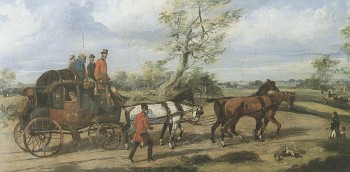 It is noticeable, however, that the portraits in his collection are
also largely of this period or earlier, and the prints and drawings
likewise. Indeed, while not a self-conscious connoisseur, there
is no doubt that Bailey had a very clear sense of where his
preferences lay with regard to pictures and that he chose
selectively. Very few of the works are not of the British school,
and those which are not to do with either sporting subjects or
portraiture (chiefly the drawings and the prints) still have about
them a kind of artistic coherence. Overall, there was clearly a
unifying 'eye' at work in the compilation of the collection.
Refreshingly, Bailey was probably largely unaware of the fact.
It is noticeable, however, that the portraits in his collection are
also largely of this period or earlier, and the prints and drawings
likewise. Indeed, while not a self-conscious connoisseur, there
is no doubt that Bailey had a very clear sense of where his
preferences lay with regard to pictures and that he chose
selectively. Very few of the works are not of the British school,
and those which are not to do with either sporting subjects or
portraiture (chiefly the drawings and the prints) still have about
them a kind of artistic coherence. Overall, there was clearly a
unifying 'eye' at work in the compilation of the collection.
Refreshingly, Bailey was probably largely unaware of the fact.
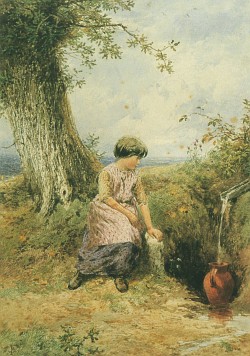 The character of the Bailey print collection is also usefully
highlighted by viewing it in relation to other print collections
in the gallery. By comparison with the large collection of
prints presented to the gallery by Alfred de Pass, the prints
bequeathed by Bailey are reproductive rather than artist's
prints. That is to say, they are largely the work of professional
printmakers who are copying paintings produced by artists
other than themselves. The prints collected by de Pass, by
contrast, tended to be the work of artists experimenting with
print-making as an artistic technique. In the late nineteenth
century, there was a reaction by some artists against the vast
and long-lived reproductive print market of the previous two
centuries. Generally employing the technique of etching,
these artists tried to turn printmaking back into a medium for
original artistic expression. Alfred de Pass's print gifts to the
gallery represent many of the works of these etchers. But Bailey's
print collection ignores them altogether and concentrates
instead on the reproductive print tradition. This was not
unusual for a late nineteenth century-early twentieth century
art collector. Coinciding with the 'etching revival', there was
a general print collecting craze which lasted from about 1880
until the collapse of the market in 1929. During this time,
reproductive prints were collected quite as enthusiastically as
artists' prints.39 Bailey's 'furniture' prints and sporting subjects
in mezzotint, stipple, aquatint and etching richly document
this tradition.
The character of the Bailey print collection is also usefully
highlighted by viewing it in relation to other print collections
in the gallery. By comparison with the large collection of
prints presented to the gallery by Alfred de Pass, the prints
bequeathed by Bailey are reproductive rather than artist's
prints. That is to say, they are largely the work of professional
printmakers who are copying paintings produced by artists
other than themselves. The prints collected by de Pass, by
contrast, tended to be the work of artists experimenting with
print-making as an artistic technique. In the late nineteenth
century, there was a reaction by some artists against the vast
and long-lived reproductive print market of the previous two
centuries. Generally employing the technique of etching,
these artists tried to turn printmaking back into a medium for
original artistic expression. Alfred de Pass's print gifts to the
gallery represent many of the works of these etchers. But Bailey's
print collection ignores them altogether and concentrates
instead on the reproductive print tradition. This was not
unusual for a late nineteenth century-early twentieth century
art collector. Coinciding with the 'etching revival', there was
a general print collecting craze which lasted from about 1880
until the collapse of the market in 1929. During this time,
reproductive prints were collected quite as enthusiastically as
artists' prints.39 Bailey's 'furniture' prints and sporting subjects
in mezzotint, stipple, aquatint and etching richly document
this tradition.
